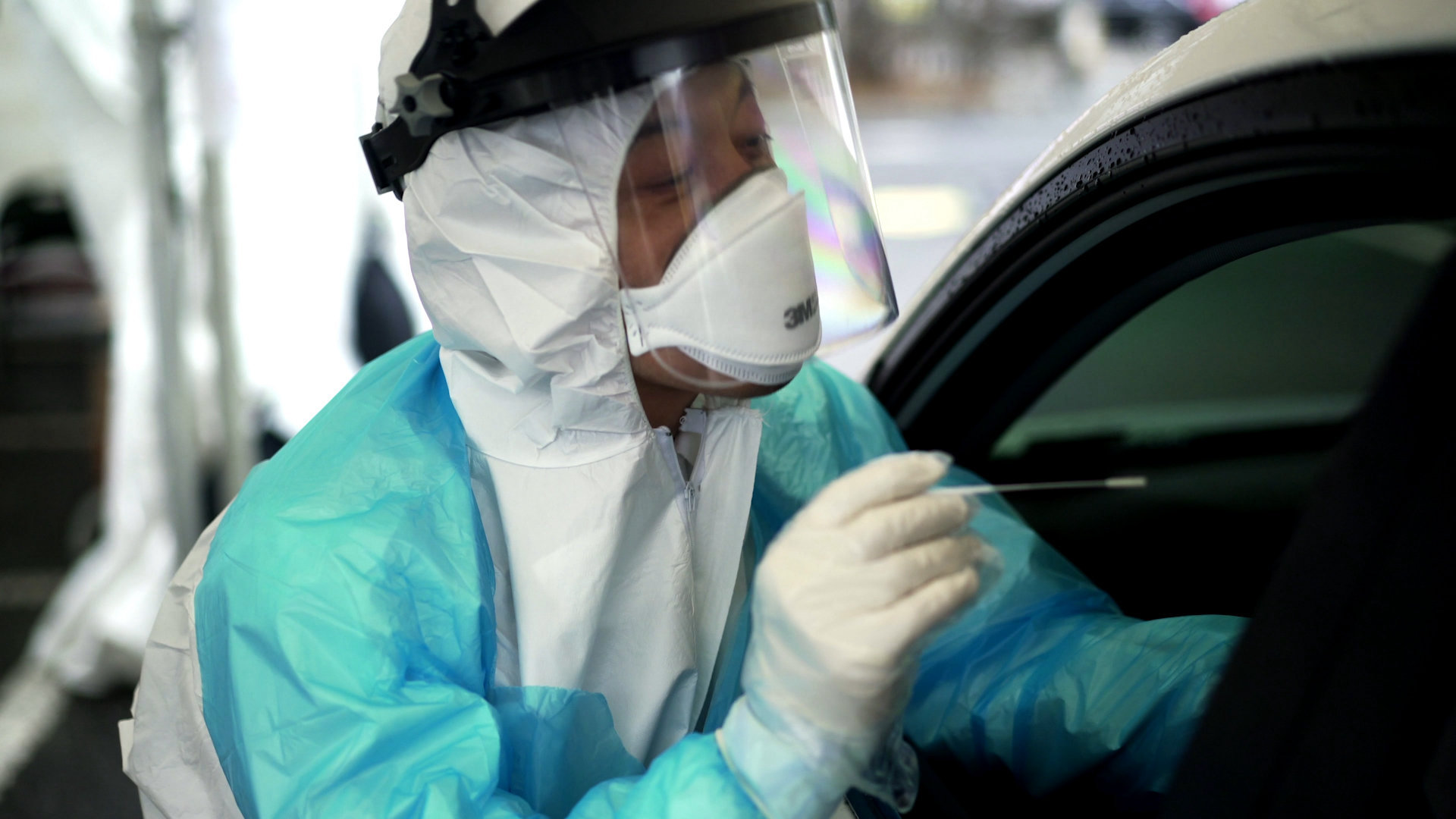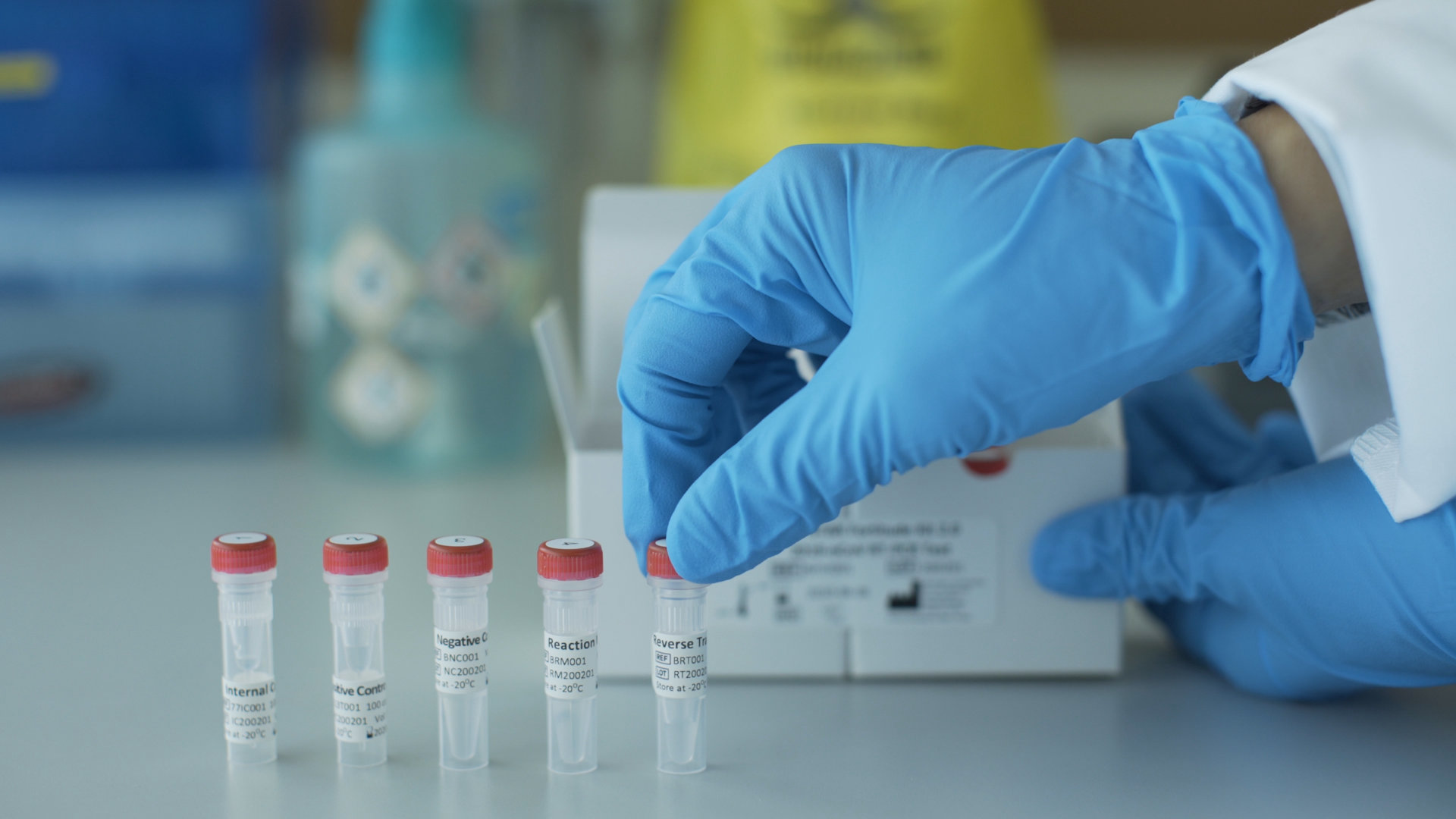By Dasl Yoon and Timothy W. Martin
SEOUL—Lee Hyuk-min sets his alarm at 4:45 a.m. He rolls out of bed, sits down at his home office desk within minutes and then begins his day’s work: analyzing a chart of novel coronavirus test data, separating the positives from the negatives.
A clinical microbiologist, Dr. Lee gets six batches of test results throughout the day. He reviews most of them at the laboratory where he works at Yonsei University Health System’s Severance Hospital in Seoul. He punches out by 11 p.m. But he is typically woken up in the middle of the night to review even more.
“It’s tough,” Dr. Lee said, “but it’s tough for everyone.”
South Korea has absorbed an onslaught of novel coronavirus infections that has left many countries’ health systems rattled. One reason it has managed to check the virus’s spread and bring down its infection rate has been an efficient testing network that allowed it to quickly isolate those infected. The country has run nearly 300,000 tests, double that of Italy’s tally despite having less than a third of confirmed coronavirus cases.
And the U.S., though ramping up capacity, has only screened about one-tenth of what South Korea has, based on the number of tests conducted at the Centers for Disease Control and Prevention facilities and other public-health labs. America’s numbers may not quickly balloon either: the Trump administration is planning to prioritize social distancing over blanket testing.
South Korea’s testing network was a legacy of a deadly outbreak of the MERS coronavirus in 2015 and kicked into gear during the new coronavirus outbreak in late January. Doctors, medical staff, laboratories and political leaders took on roles and followed protocols established in recent years.
Drive-through clinics have helped South Korea test nearly 300,000 people.
Dr. Lee, and others like him, represent the final checkpoint in this system, a coordinated diagnostics operation that knits together 633 test sites and more than 100 laboratories nationwide. It is a uniform setup: The labs use the same testing equipment, do the same training and make decisions based on the same information.
At 8 a.m., every South Korean laboratory uploads the results of their coronavirus tests to a shared database, allowing for public and private hospitals around the country to monitor their patients’ results and report them to the Korea Centers for Disease Control and Prevention. Hospitals upload testing details to an online directory created by experts from an infectious-disease medical society.
“The surveillance allows us to predict where we need to focus our efforts,” said Dr. Lee, 49, who has advised the South Korean government on Covid-19 laboratory-testing issues. “It’s also a network to share any problems that arise from inconclusive tests.”
South Korea’s approach was developed following the MERS outbreak, which resembled the chaos now seen elsewhere. The country was slow in approving test kits and pushed diagnostics work to fewer than five state-run facilities. Labs took four or five days to confirm results. Patients exhibiting respiratory illness symptoms went undiagnosed and unknowingly infected others. The roughly two-month outbreak left 186 people infected, 38 of whom died.
Afterward, South Korea overhauled its emergency response system. It gave large private hospitals—which played a small role in testing during the MERS outbreak—approval to assist with diagnostic testing, demanded hospitals train extra staff to operate the machinery and established separate laboratory-medicine departments.
The changes took two years to put into place. But when the coronavirus outbreak began in January, South Korean health officials could immediately enlist more than 100 facilities for tests and can now screen up to 20,000 people a day. Other post-MERS changes reduced the time companies needed to win regulatory approval for new tests. An accelerated approval system was implemented in 2016.etting Tested for Coronavirus at a Drive-Through Clinic

Getting Tested for Coronavirus at a Drive-Through Clinic
As coronavirus spreads across the world, countries are setting up drive-through clinics to make it easier for their citizens to get tested. WSJ’s Andrew Jeong visited a test site in South Korea to see how it works. Photo: Denis Bosnic for the Wall Street Journal
South Korea crucially let local biotech firms craft their own tests based on disease modeling that used the Covid-19 genetic test code released by China in January. The first company won approval for its kit on Feb. 4— two weeks before infections surged. Now, South Korea has five test-kit suppliers that use different materials but all deploy the same testing method.
But test availability is only one half of the equation, as a stable of laboratories are needed to confirm results, said Lee Wang-jun, chairman at the Myongji Hospital in Seoul and an adviser for the South Korean government’s Covid-19 response team.
A lab at Yonsei University Health System’s Severance Hospital in Seoul, one of more than 100 in South Korea.
“There’s no point in just having a lot of testing kits,” said Dr. Lee, noting Myongji has two testing machines running all day. “You also need the manpower and the laboratories.”
Innovation also played a key role. The government introduced drive-through testing sites that minimized contact and sped up testing, an idea that has quickly been adopted in some states in the U.S. Some hospitals ask patients to step into an enclosed space, resembling a phone booth, where medical staff swab for samples by using arm-length rubber gloves built into a plastic panel.
The World Health Organization singled out South Korea for praise on Wednesday for developing innovative testing strategies.
The situation looks different in the U.S., where hospitals and citizens are still scrambling to boost test availability. The Food and Drug Administration this week moved to allow lab companies to release coronavirus tests without prior government approval. But the supply of products and chemicals needed to run the tests is dwindling.
“The demand is outstripping our ability to perform those tests in a timely fashion,” said Benjamin Pinsky, medical director at the Stanford Clinical Virology Laboratory, which has created its own diagnostic test.
One of the biggest stumbling blocks in the U.S.’s nationwide rollout of tests was the FDA’s requirement that labs developing their own tests had to essentially use a live virus sample to have their tests certified—a criteria it has since relaxed. Alex Greninger, an assistant director of the University of Washington’s virology division in Seattle, said his team rushed to locate a live virus sample that could prove its test trustworthy enough for FDA standards.

How Coronavirus Test Kits Work
Test kits have been one of the main ways to determine if a patient has coronavirus, but results from throat-swab tests can be inaccurate. WSJ visited a lab in Singapore to see how the kits work and find out why there are questions over accuracy. Photo: Crystal Tai
But Dr. Greninger had a problem: The coronavirus hadn’t yet spread in the Washington area. “We didn’t have many specimens to validate testing,” he said. “I worked the phones a lot.”
He eventually sourced an extraction from a live sample in late February, just as the state of Washington’s coronavirus outbreak started accelerating.
South Korea didn’t set such requirements for test manufacturers. The country, with 8,565 confirmed cases as of Thursday, now ranks eighth globally, having been surpassed by the U.S. and France in the past day.
Yonsei’s Lee Hyuk-min says the turnaround for results typically takes six hours upon getting the samples at his Seoul lab.
Dr. Lee of Yonsei said his hospital could test the roughly 300 coronavirus samples collected throughout the day all at once. The reason they do it six times a day, he says, is to speed up the process of identifying, quarantining and treating patients.
His hospital’s capacity is small relative to other large, private laboratories that can process more than 3,000 tests a day.
Medical experts advising the government on Covid-19 said South Korea’s infectious-disease management system has been transformed by the involvement of specialists in the field, compared with the government’s delayed response to MERS due to a lack of expertise.
“In the early stages of the MERS outbreak, infectious-disease specialists were not involved at all, and initial prevention was a failure,” said Kim Woo-joo, the former head of the MERS rapid-response team and an infectious-disease professor at Korea University in Seoul.
Coronavirus test results are shown on a monitor.
South Korea, with 52 million people, had an easier time tracking down patients than China or the U.S., as it is the geographic size of Indiana. When a massive cluster of cases occurred at the secretive Shincheonji Church of Jesus in Daegu, the country focused its initial efforts on tracking down and testing the 10,000 churchmembers in the city—and those who had crossed paths with them—regardless of their symptoms.
Early identification is key in infectious-disease management, health experts say. When South Korea identified its first coronavirus patient on Jan. 20, biotech companies already had developed test kits and were awaiting approval.
“The U.S. already missed the golden time,” Yonsei’s Dr. Lee said. “It took them too long to identify the first patient, and in the meantime, thousands would already have been infected.”
Write to Dasl Yoon at dasl.yoon@wsj.com and Timothy W. Martin at timothy.martin@wsj.com
No comments:
Post a Comment